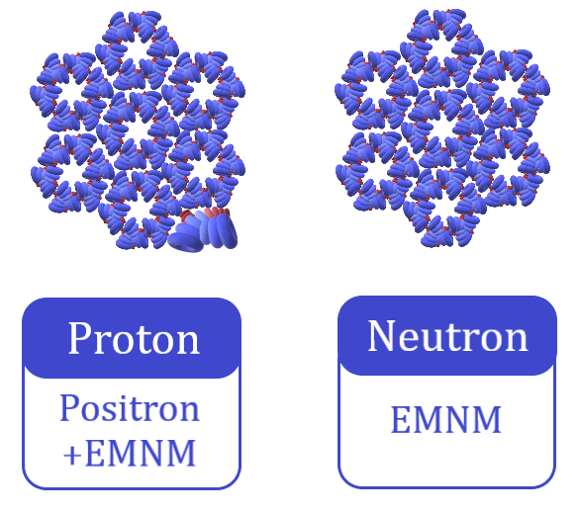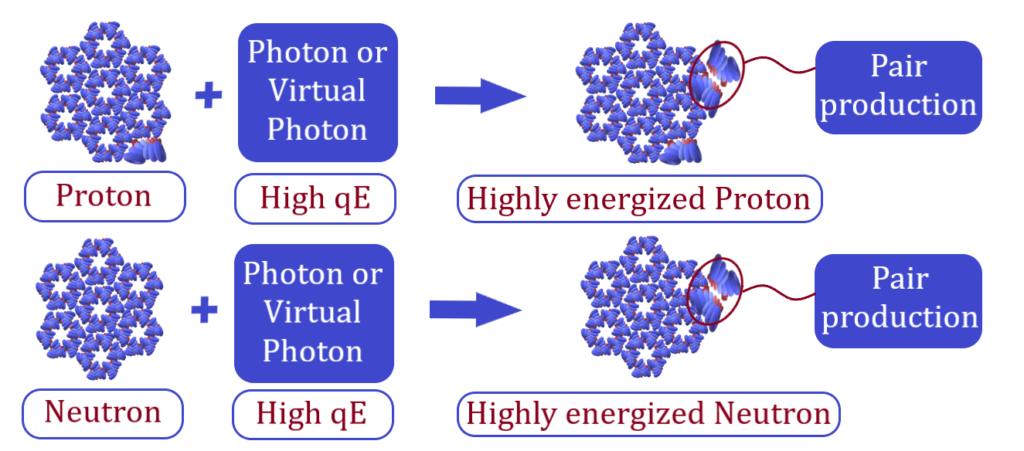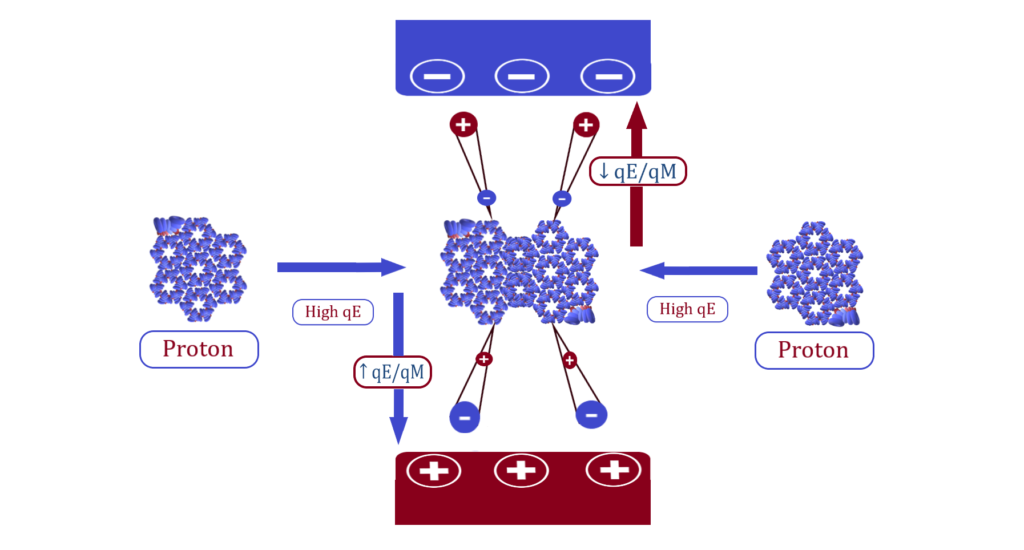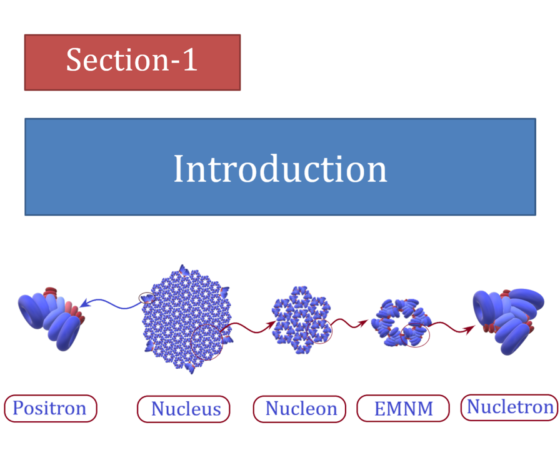Nucleus: (Watch Video)
Experimental Facts:
The Nucleus of the atom is made up of the positive charge protons and the chargeless neutrons. Nucleus has the highest mass density as well as it possesses very high energy pressure.
Proton is 1836 times heavier than Electron but the building blocks of the proton (i.e. two up quarks and one down quark) are only 17 times heavier than Electron and this is also true for neutron. This suggests that only 1% mass of quarks having definite charge and spin is measured by using deep inelastic scattering techniques. According to the traditional hypothesis, the remaining 99% of the mass of proton and neutron which is not measured by the same experiment is considered as the strong force field energy.
Indications:
The above facts indicate that only 1% mass of nucleons is sensitive for surrounding electromagnetic fields, so it can be measured during deep inelastic scattering techniques.
The remaining 99% mass present within nucleons is electromagnetically neutral, so it cannot be measured during the same experiment.
It is indicated that the very strong attraction forces exert between the tqM within the nucleons of Nucleus because of the very low tqE/tqM. So, the Nucleus possesses intense mass density along with the intense energy pressure.
This remaining 99 % mass of the nucleus may possess EMNM of hadrons which contributes to very strong attraction force not only for one another but also for surrounding dark matter.
 It can be hypothesized that within the normal (non-radioactive) Nucleus, a proton is made up of a Positron along with EMNM and a neutron is made up of the EMNM only.
It can be hypothesized that within the normal (non-radioactive) Nucleus, a proton is made up of a Positron along with EMNM and a neutron is made up of the EMNM only.

Due to exposure of nucleons to very high qE during high energy experiments, a minute fraction of EMNM of nucleon dissociated into a pair of electron and positron within a nucleon.
So, the highly energized proton is made up of a Positron along with one or more pairs of electron and positron as well as EMNM and highly energized neutron is made up of one or more pairs of electron and positron along with the EMNM.
By targeting electrons or leptons to nucleons, virtual photons are created during deep inelastic scattering. Nucleons like protons and neutrons absorb excess qE from virtual photon which dissociates minute fraction of EMNM of nucleon into pair of electron and positron within a nucleon.
In particle accelerators, the process of hadronization suggests the absorption of qE during the high energy collision between two hadrons which suggests the dissociation of an EMNM of nucleon into a pair of electron and positron.
By exposer of high energy gamma-ray to the neutron-rich nucleus, Electron-Positron pair production is observed along with β– emission.
Reason for the formation of Jets during high energy experiments:
Due to exposure of nucleons to very high qE during high energy experiments, a minute fraction of EMNM of nucleon dissociated into a pair of electron and positron within a nucleon.
 During the process of hadronization, electrons move towards the direction having higher qE/qM within jet and positrons move towards the direction having lower qE/qM within jet. So, due to the movement of both charges in opposite direction from each other coupled with very strong attraction force of electromagnetically neutral mass within nucleon, narrow cone-shaped jets are produced during high energy experiments in presence of very strong electromagnetic fields.
During the process of hadronization, electrons move towards the direction having higher qE/qM within jet and positrons move towards the direction having lower qE/qM within jet. So, due to the movement of both charges in opposite direction from each other coupled with very strong attraction force of electromagnetically neutral mass within nucleon, narrow cone-shaped jets are produced during high energy experiments in presence of very strong electromagnetic fields.


